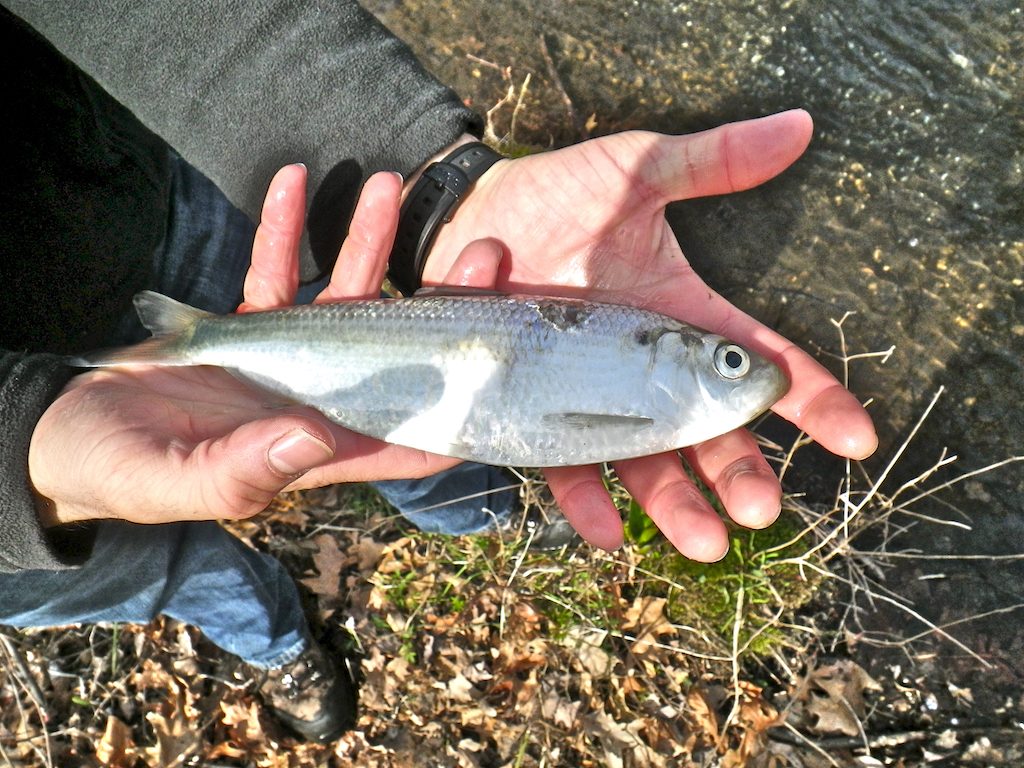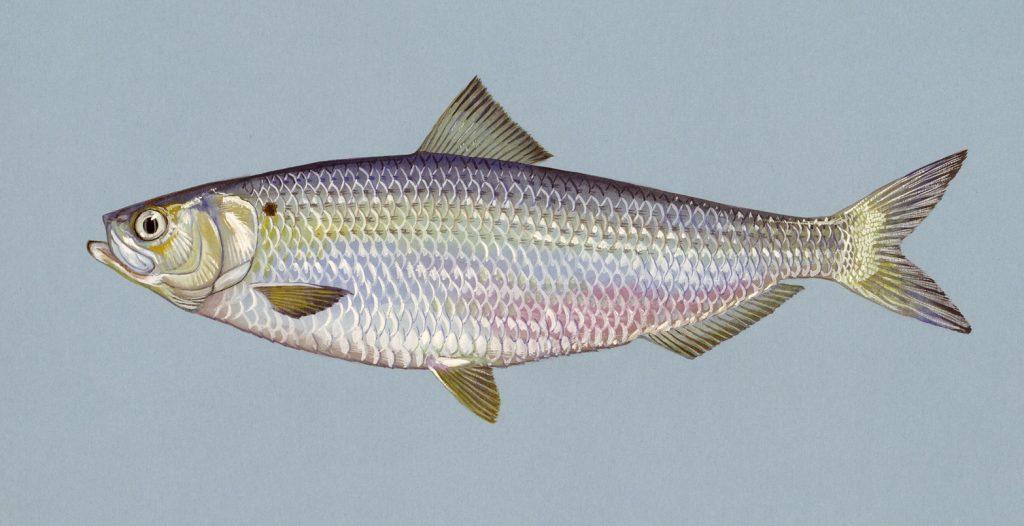A joint dispatch from the UConn Schultz Fish Lab and Save the Sound
The term “river herring” is commonly used to refer to two species: alewife (Alosa pseudoharengus) and blueback herring (Alosa aestivalis). Unassuming in nature, these fish are best known for their difficult yearly spring migration from saltwater to freshwater spawning grounds, a type of migration made by only 1% of all fish species. There, the females lay around 100,000 eggs each. Once hatched, juveniles spend the first months of their lives in freshwater across the Long Island Sound coastal region and far beyond, taking advantage of the relative safety and abundant food resources before proceeding downstream to begin their adult lives at sea.

Bride Alewife © Jon Velotta
The story of river herring is truly remarkable. And yet, even with their impressive physiological and morphological adaptations, river herring are doomed to be a delicacy for countless other species. Myriad predators including striped bass, osprey, bald eagles, river otters, and humans have long relied on the annual river herring migrations for sustenance, consuming untold numbers of herring. In so doing, they maintain a critical ecological linkage—the transfer of marine nutrients, bound up in forage fish biomass, into energy for other, larger freshwater and terrestrial species.
Hundreds of years ago, river herring migrations in rivers across the Long Island Sound region would have been an awe-inspiring spectacle of abundance. Unfortunately, millions of fish frantically swimming upstream could hardly go unnoticed—or unexploited. Their schooling and predictable nature led to river herring being harvested by the hundreds of thousands for bait, fertilizer, animal feed, and human consumption. Industrialization of fishing techniques enabled commercial efforts to reach peak harvest in 1958 at 74.9 million pounds, far eclipsing the ability of the fish to regenerate their populations in rivers that were polluted by various human activities and fragmented by hundreds of dams.
Today, a number of efforts exist to restore river herring to their former glory, including a complete ban on harvest in many New England states (including Connecticut), ongoing research projects, and stocking efforts. Even as this dispatch was being drafted, Save the Sound, the University of Connecticut Schultz Fish Lab, Connecticut Department of Energy and Environmental Protection (DEEP), and several other organizations were monitoring the return of river herring to restored habitat and working to remove barriers to their passage all across the region.
One of the primary objectives of this work is to restore ecological connectivity—the presence or absence of barriers that could hinder the ability of the fish to swim from Long Island Sound to their spawning habitat upstream. Barriers come in many forms, the most common of which are dams and culverts. They vary drastically in severity, from a small culvert at stream level easily passed by migratory fish to total barriers several stories high. The replacement of a culvert at the mouth of Bride Brook in East Lyme, CT by Save the Sound, DEEP, and other partners in 2010 is an illustration of what can happen when one of these barriers is removed. In that case, the existing culvert was frequently clogged with sediment and debris, slowing the state’s largest run of alewife. Upon its replacement with an improved design, the run at Bride Brook has rebounded from an average of fewer than 100,000 fish per year to exceed 400,000 in just ten years. Fish from the Bride Brook run are now used to stock other streams across the state in order to bolster or revive runs in those locations.

Blueback herring
While the modern family in the northeast may no longer rely on river herring to survive our harsh winters, the fundamental importance of these fish remains. Through their critical role in their native food webs, these fish support communities, livelihoods, ecosystems, and industries. For far longer than any record of their existence, river herring have roamed the oceans and streams of this region, engaged in a titanic struggle to survive long enough to reproduce and ensure the next generation. For the past few centuries their largest threats have originated from human actions—considering all they continue to provide to us, we owe them our collective support for restoration efforts to give them a fighting chance of reclaiming their abundance. ■




